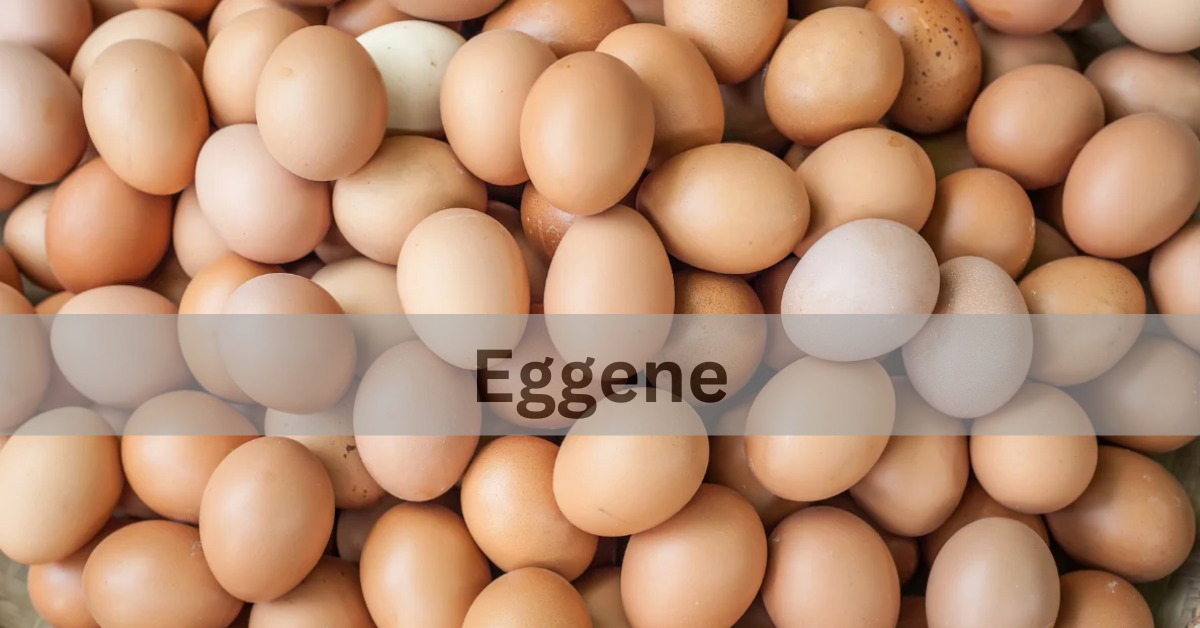Eggene refers to the innovative manipulation and utilization of genetic material within eggs, whether in animals or plants. This technique involves altering the genetic makeup to achieve particular traits or results through selective breeding and genetic engineering. The term “Eggene” is a combination of “egg” and “gene,” which highlights the focus on manipulating genes within egg cells to bring about desired genetic changes.
Table of Contents
Origins of Eggene
The concept of Eggene can be traced back to early experiments in genetic manipulation and selective breeding. These initial efforts aimed to enhance desirable traits in organisms, primarily to improve agricultural yields and develop livestock breeds with favorable characteristics. As technology and genetics have advanced, the scope and applicability of Eggene have expanded significantly, now encompassing fields such as medicine and environmental conservation.
Agricultural Enhancements
One of the primary applications of Eggene is in agriculture. By manipulating the genetic material within eggs, scientists can create crops that are more resistant to pests, diseases, and extreme weather conditions. This leads to higher yields and more reliable food sources, which is crucial for feeding the growing global population. Additionally, livestock can be genetically improved to produce more meat, milk, or eggs, with better nutritional profiles and fewer health issues.
Medical Advancements
In medicine, Eggene holds promise for revolutionizing treatments and disease prevention. By understanding and altering the genetic makeup within eggs, researchers can potentially eliminate hereditary diseases and conditions before they manifest. This proactive approach could lead to healthier populations and reduce the burden on healthcare systems. Furthermore, Eggene can be used in regenerative medicine, where genetically engineered cells can repair or replace damaged tissues and organs.
Environmental Conservation
Eggene also has significant implications for environmental conservation. Through genetic manipulation, endangered species can be bred more effectively, increasing their populations and enhancing genetic diversity. This can help prevent extinction and maintain ecological balance. Additionally, Eggene can be used to create organisms that can degrade pollutants or adapt to changing environmental conditions, contributing to the overall health of ecosystems.
Ethical Considerations
While the potential benefits of Eggene are vast, there are ethical considerations that must be addressed. Manipulating genetic material raises questions about the long-term effects on biodiversity and the natural evolution of species. There are also concerns about the potential for unintended consequences, such as the creation of new diseases or ecological imbalances. Therefore, rigorous ethical guidelines and oversight are essential to ensure that Eggene is used responsibly and safely.
Future Prospects
The future of Eggene is bright, with ongoing research and development paving the way for new and innovative applications. As our understanding of genetics deepens, the possibilities for improving human health, agricultural productivity, and environmental sustainability through Eggene will continue to expand. Collaboration between scientists, policymakers, and the public will be crucial in harnessing the full potential of this powerful tool while addressing ethical and safety concerns.
Eggene in Human Reproduction
Eggene technology is not limited to agriculture and environmental conservation; it also holds immense potential in human reproduction. With advancements in assisted reproductive technologies (ART), such as in vitro fertilization (IVF), scientists can manipulate the genetic material within human eggs to prevent inherited genetic disorders. This process, known as preimplantation genetic diagnosis (PGD), allows for the screening of embryos created through IVF for specific genetic conditions before implantation into the womb. Additionally, Eggene techniques may pave the way for genetic enhancements in humans, raising complex ethical questions regarding the definition of what constitutes a desirable trait and the potential for creating genetically engineered “designer babies.”
Eggene and Evolutionary Biology
From an evolutionary perspective, Eggene introduces a new dimension to the concept of natural selection. While traditional natural selection relies on random genetic mutations and environmental pressures to drive evolution, Eggene allows for deliberate manipulation of genetic traits within populations. This raises questions about the role of human intervention in the evolutionary process and the potential consequences for the long-term adaptation and survival of species. Moreover, Eggene may blur the lines between natural and artificial selection, challenging our understanding of evolutionary biology and the mechanisms that govern the diversity of life on Earth.
Socioeconomic Implications of Eggene
The widespread adoption of Eggene technologies may have profound socioeconomic implications, particularly in developing countries. While Eggene has the potential to increase agricultural productivity and improve public health outcomes, disparities in access to these technologies could exacerbate existing inequalities. Without adequate regulation and equitable distribution, Eggene could widen the gap between the haves and have-nots, further marginalizing vulnerable populations. Addressing these socioeconomic disparities will be essential to ensure that the benefits of Eggene are shared equitably and contribute to sustainable development worldwide.
Regulatory Challenges and Governance
As Eggene continues to advance, regulatory frameworks and governance mechanisms must evolve to keep pace with technological developments and ensure responsible use. The complexity of manipulating genetic material raises challenges for oversight and risk assessment, particularly regarding the potential for unintended consequences and ethical dilemmas. International collaboration and coordination will be essential to establish robust regulatory standards that uphold ethical principles, protect human health and safety, and safeguard the environment. Additionally, public engagement and education are crucial for fostering informed decision-making and promoting transparency in the development and application of Eggene technologies.
Eggene in Conservation Genetics
Conservation genetics is another area where Eggene holds great promise. Endangered species often suffer from low genetic diversity, making them more susceptible to diseases, environmental changes, and other threats. With Eggene, scientists can introduce genetic variations into small populations of endangered species, enhancing their genetic diversity and resilience. This could involve techniques such as gene editing to remove harmful mutations or introduce beneficial traits. By bolstering the genetic health of endangered populations, Eggene can play a vital role in species conservation efforts, helping to prevent extinctions and restore ecosystems.
Eggene and Food Security
Food security is a pressing global issue, with the challenge of feeding a growing population amidst environmental degradation and climate change. Eggene offers innovative solutions to enhance food production and resilience in the face of these challenges. By genetically modifying crops to withstand harsh environmental conditions, such as drought, salinity, or extreme temperatures, Eggene can help ensure stable yields and mitigate the impact of climate variability on agricultural systems. Additionally, Eggene can improve the nutritional content of crops, addressing malnutrition and dietary deficiencies in vulnerable populations. However, concerns about the safety and long-term effects of genetically modified organisms (GMOs) on human health and the environment must be carefully considered and addressed through rigorous testing and regulation.
Eggene and Space Exploration
As humanity looks towards exploring and colonizing other planets, Eggene could become indispensable in sustaining life beyond Earth. Space agriculture, or the cultivation of crops in extraterrestrial environments, presents unique challenges due to the harsh conditions and limited resources available in space. Eggene technologies can be used to develop crops that are tailored to thrive in microgravity, low-light conditions, and nutrient-poor soils found on other celestial bodies. By engineering plants to be more efficient in resource utilization and resilient to space conditions, Eggene can contribute to the establishment of self-sustaining ecosystems in space habitats, enabling long-duration space missions and eventual human settlement of other worlds.
Conclusion
Eggene represents a fascinating and rapidly evolving field of genetic manipulation. From its origins in selective breeding to its current applications in agriculture, medicine, and environmental conservation, Eggene has the potential to transform various aspects of our lives. As we move forward, it is essential to balance innovation with ethical considerations to ensure that the benefits of Eggene are realized in a safe and sustainable manner.



